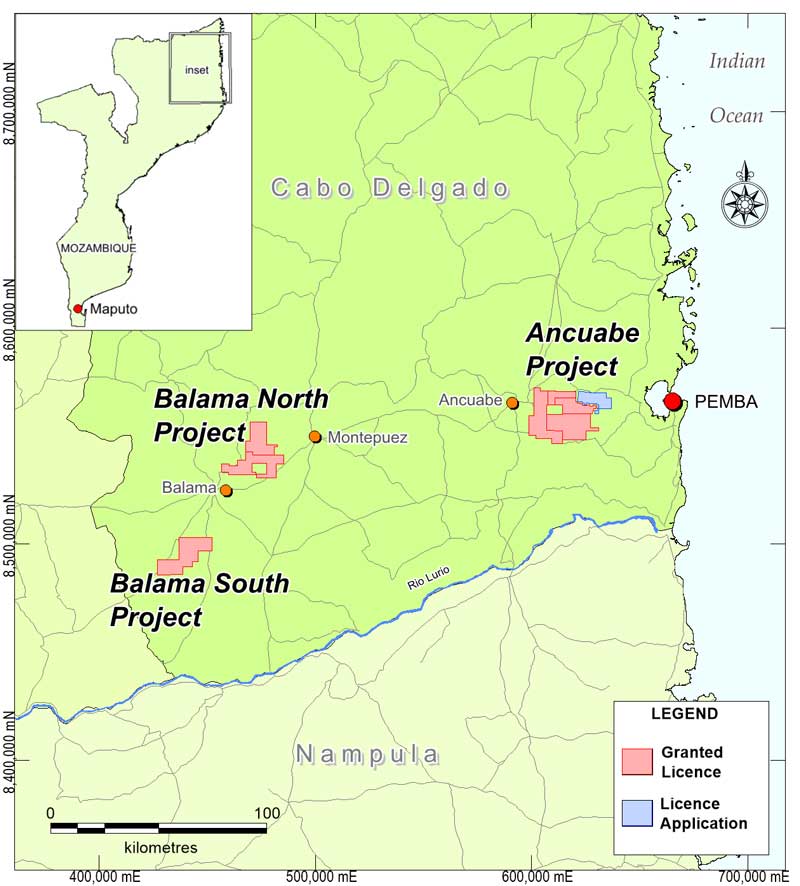
Monday, December 30, 2019
RESIGNATION OF MOMADE IS PRICE OF PEACE, SAYS NHONGO
The leader of the
self-styled “Renamo Military Junta”, Mariano Nhongo. on Sunday declared that
the current wave of armed attacks in the central Mozambican province of Manica
and Sofala will only end when the current president of Renano, Ossufo Momade,
resigns.Speaking by telephone to a press conference in Beira, Nhongo said “If
the government recognises that Ossufo does not represent Renamo, then there
will be no more shooting here”.
With these few
words, Nhongo effectively took responsibility for the murderous attacks over
the past few weeks on buses and trucks on the roads running through Manica and
Sofala.Nhongo said he had sent a document to the Mozambican government, listing
the conditions for the demobilisation and disarming of the Renamo fighters
loyal to him. These conditions include the removal of Momade from the
leadership of Renamo.“The Mozambican
government must accept that he (Momade) does not represent Renamo”, he said. Nhongo said he sent
the document to the government on 2 October, “and so far we have had no reply”.
There were now
government armoured vehicles inside the Renamo bases, he said, and “now we are
going to set those armoured cars on fire”.
“We are going to do
what we know how to do”, Nhongo added. “We are not playing about, and Frelimo
should not play with us”.Momade, however, enjoys democratic legitimacy in that
he was elected President of Renamo in a contested election held during a party
congress in January 2019.
Nhongo promoted
himself to the rank of general, and a handful of other Renamo military figures
appointed him leader of the party. There is no way of gauging how many of the
remaining Renamo fighters are loyal to Momade and how many support Nhongo.
Nhongo also claimed
that government forces are kidnapping Renamo guerrillas with the complacency of
Momade.“Ossufio and Nyusi are stealing what is ours”, he claimed, “and we won’t
agree to go home with empty hands”, presumably referring to the demobilisation
package likely to be offered under the peace agreement.
Tuesday, December 24, 2019
Discuss strategies to combat banana
120 stakeholders gathered at an international
conference in Maputo, Mozambique to discuss the current status and future of
the banana industry in Mozambique, which has been threatened by the outbreak of
two diseases, Panama Disease Tropical Race 4 (Foc TR4) and Banana Bunchy Top
Virus (BBTV).
 The conference, organised by the nonprofit
organisation TechnoServe and the Mozambican Ministry of Agriculture and Food
Security (MASA) with funds from the United States Department of Agriculture
(USDA), focused on sharing best practices from the efforts in Mozambique to
prevent, control and contain these two diseases. Experts from around the world,
including from the United Nations Food and Agriculture Organisation and
Bioversity International, Stellenbosch University and the Agricultural Research
Council in South Africa, spoke about the origins of the recent outbreak and
strategies to address the challenges facing global banana production in light
of these diseases. Researchers and scientists from the Philippines, China and
India highlighted the experiences of controlling Panama disease in their own
countries; similarly researchers and scientists from Cameroon, Burundi,
Australia, and South Africa highlighted the experiences of controlling BBTV in
their own countries. During the opening session, Laura Geller, the Senior
Agricultural Attaché for the USDA, spoke about the United States’ role in
supporting the Mozambican banana industry, which has been a key player in the
past few years.
The conference, organised by the nonprofit
organisation TechnoServe and the Mozambican Ministry of Agriculture and Food
Security (MASA) with funds from the United States Department of Agriculture
(USDA), focused on sharing best practices from the efforts in Mozambique to
prevent, control and contain these two diseases. Experts from around the world,
including from the United Nations Food and Agriculture Organisation and
Bioversity International, Stellenbosch University and the Agricultural Research
Council in South Africa, spoke about the origins of the recent outbreak and
strategies to address the challenges facing global banana production in light
of these diseases. Researchers and scientists from the Philippines, China and
India highlighted the experiences of controlling Panama disease in their own
countries; similarly researchers and scientists from Cameroon, Burundi,
Australia, and South Africa highlighted the experiences of controlling BBTV in
their own countries. During the opening session, Laura Geller, the Senior
Agricultural Attaché for the USDA, spoke about the United States’ role in
supporting the Mozambican banana industry, which has been a key player in the
past few years.Showcasing Mozambique’s graphite potential
Triton Minerals may in the near future be one of the
hottest graphite investments in Africa. Full-scale construction at its 100%
owned, Mozambique-based Ancuabe graphite project is scheduled to start in April
2020. This will unlock a large flake, high purity deposit that will benefit
from the imminent shortfall in Chinese production of expandable graphite
material, MD Peter Canterbury tells Laura Cornish.
“Shandong is historically the only large-flake
graphite producer in China and is expected to see significant drops in graphite
production as their assets age and mines are closed due to environmental
impacts which the government are looking to reduce,” Canterbury explains.
As such, Triton Minerals has already secured off-take
agreements for 52% of its production with companies in the Chinese Province.
Ancuabe will at full capacity produce 60 000 tpa of
graphite material, which may seem small but is in fact on the larger size of
graphite production Canterbury confirms. At this rate, the mine will operate
for 28 years although the MD notes there is a substantial 49 Mt resource which
once converted could either ramp up the facility’s operating rate or
drastically increase the project’s lifespan. The deposits (there are two that
will be mined for now) have a 6.6% total contained graphite (TCG) content –
which although not the highest is still significant, especially when taking the
unchallenging mineralogy and geological setting into account.
“Importantly, we have determined a four-year payback
on the project and a 37% IRR,” Canterbury highlights. With the project fully
permitted and the necessary investment in place, Triton Minerals is set to move
into full-scale construction on the project in April 2020 (onsite early works
had previously commenced). “We have planned for a 15-month construction period
which will take us to July 2021 to produce our first graphite.” Diversified
Chinese state-owned enterprise MCC International is the appointed EPC
contractor, and will be supported by an owner’s team from South Africa-based
Lycopodium ADP. MCC International is based in Beijing with business units
spanning natural resources, manufacturing, equipment fabrication and real
estate. In 2015, the company merged into China Minmetals to become China’s largest
mining company. The group has a number of complementary proficiencies including
engineering and civil construction. In addition, MCC has strong relationships
with major Chinese banks and has introduced Triton Minerals to potential
financiers, one of whom has provided a loan facility which will fund up to 85%
of the EPC contract at competitive concessional rates. Through the EPC tender
process, Triton Minerals was able to flag potential pre-production capex
savings of 10 to 15% on the US$99.4 million DFS estimate to around $85 million.
Returning to the project itself, Canterbury explains
that Ancuabe will comprise two pits – the T16 deposit and then later on the T12
deposit – situated just 3 km apart. “With our graphite situated no deeper than
130 m, the deposits will be open cut, drill and blast operations. The material
will be transported to a ROM pad which will be followed by three crushing
stages after which it will be moved into a temporary holding bin, ready for
processing.” A 1 Mtpa mill will start the process after which flotation and up
to four stages of cleaning (vertical attrition, separation of large flakes)
will take place. Waste thickening will follow after a filtration circuit. The
filtered material will be kiln dried and then bagged into three or four
different size fractions in 1 m³ bags which will be transported from site to
the port to be containerised and shipped.
 Logistically, Ancuabe has no challenges. Its water and
electricity needs pose no difficulties either. The government has granted
Triton Minerals approval to build a 1.5 million cubic litre dam which should
fill within a month of the rainy season onset. Situated close to the processing
plant, the dam will provide all of Ancuabe’s process water needs. “We will also
benefit financially from a 110 kVa power line that runs through our tenement
after it has been upgraded in 2022.” Until then, an 8.5 MW containerised diesel
power plant will fuel Ancuabe’s power needs. Last, but not least, Triton
Minerals is looking to employ around 200 people on a full-time basis once
construction is complete – most of which will be Mozambique residents. The
workforce will peak at about 500 during the mine’s construction period. “With
50% of our product already secured by end users, and the necessary funding in
place to take Ancuabe through to production, we believe we are a stand-out
graphite junior and are positioned to soon move from developer to producer. “In
doing so we will deliver value through returns which will give us the
optionality of returning cash to our shareholders through dividends or
developing the additional assets in our portfolio,” Canterbury concludes.
Logistically, Ancuabe has no challenges. Its water and
electricity needs pose no difficulties either. The government has granted
Triton Minerals approval to build a 1.5 million cubic litre dam which should
fill within a month of the rainy season onset. Situated close to the processing
plant, the dam will provide all of Ancuabe’s process water needs. “We will also
benefit financially from a 110 kVa power line that runs through our tenement
after it has been upgraded in 2022.” Until then, an 8.5 MW containerised diesel
power plant will fuel Ancuabe’s power needs. Last, but not least, Triton
Minerals is looking to employ around 200 people on a full-time basis once
construction is complete – most of which will be Mozambique residents. The
workforce will peak at about 500 during the mine’s construction period. “With
50% of our product already secured by end users, and the necessary funding in
place to take Ancuabe through to production, we believe we are a stand-out
graphite junior and are positioned to soon move from developer to producer. “In
doing so we will deliver value through returns which will give us the
optionality of returning cash to our shareholders through dividends or
developing the additional assets in our portfolio,” Canterbury concludes.
Subscribe to:
Posts (Atom)
